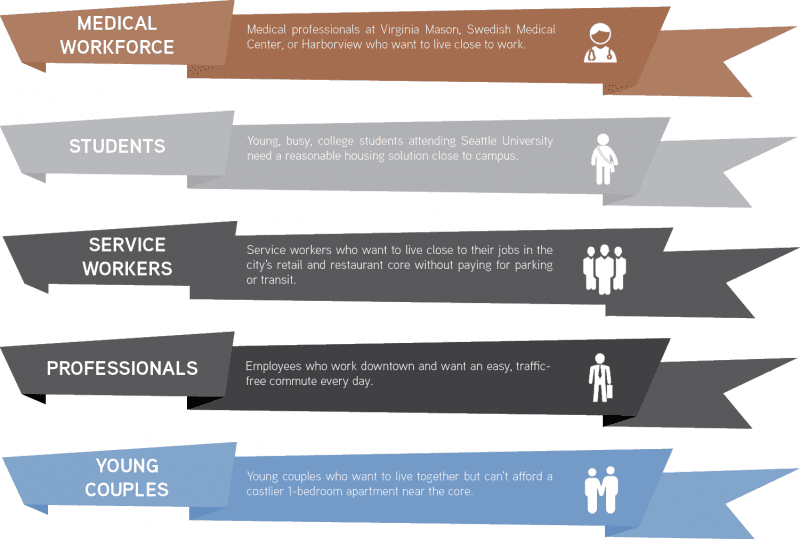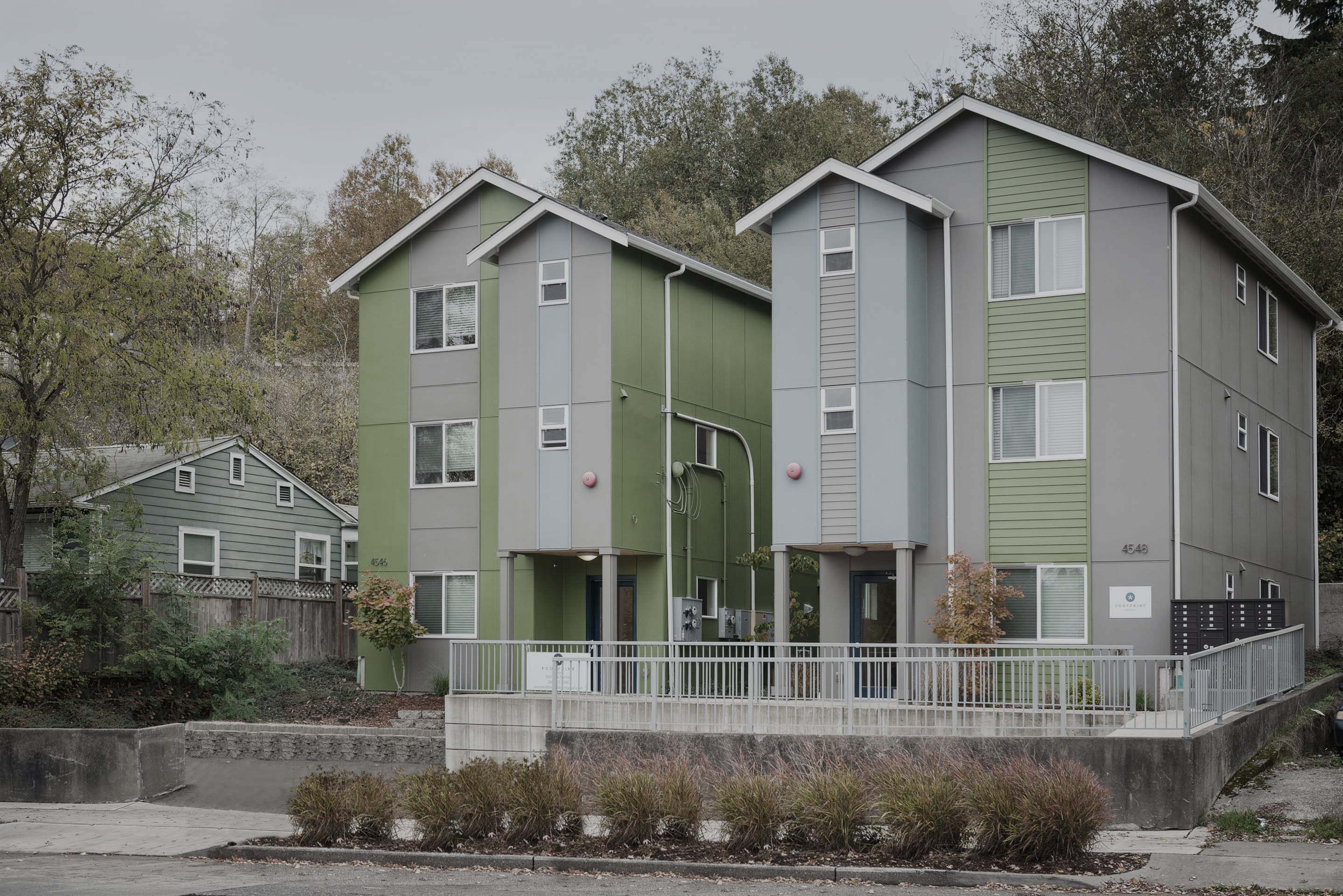I’ve developed a real affection for micro & SEDU housing over the past few years, and I talk about this product type with a lot of developers, property owners, and Seattle residents. Most of the people who work with or live in micro housing love them. But I also hear a lot of rumors, stereotypes, and myths about this unique kind of housing because many people don’t understand what they are, who lives in them, or why they even exist.
Let me break the news: as long as Seattle rents keep rising, micro and SEDU housing is here to stay. So allow me to dispel some of the more common myths about this miniature product type:
- Myth #1: All micros are the same
- Myth #2: Nobody wants to live in micro housing
- Myth #3: Micro housing is cruel
- Myth #4: Micro housing is a bad investment
Myth #1: All micros are the same
Turns out there’s more than one way to build a tiny apartment in Seattle: there are actually five ways. But they fall into two main categories: micros/congregate housing and SEDUs (Small Efficiency Dwelling Units). Micros and congregate housing both have shared kitchens in the buildings, while SEDUs are basically very small studios, some even offering washers and dryers.

Why so many types?
The primary reason for the diverse types is that developers differ in how they think people want to live. If you’re building in the micro/congregate style, you’re saying people want the most affordable unit possible. To do that you make them smaller and minimize the upgrades. They are “just enough” but will provide the right tenant a place to live in their favorite neighborhood for under $1,000.
If you’re building SEDUs, you want your units to be a little stickier with tenants that plan to stay more than a year and for more than affordability. The units are going to feel more like home, there will be higher end finishes and a few more options like a cooktop, a larger refrigerator, a fold up bed, and a washer and dryer. As a result, rent will be closer to $1,200. They’re targeting the renter who’s just a little more efficient in how they live, and who also enjoys a lower cost.
Myth #2: Nobody wants to live in micro housing
Not true, or developers would have stopped building them! Micro and SEDU housing is an attractive option for more of Seattle’s young professionals and workforce than you may think. People want to live near their work and their friends, and many are willing to sacrifice space for commute time and affordable rent.
For example, I met a guy moving into a SEDU who moved here from Florida because he found out he’d make more money here. But his apartment in Florida was $600/month, and here he discovered he was living an hour from the city (for the same price), and he did not like our traffic. So he moved closer to where work was, and that meant he moved into a micro. He didn’t come here thinking he’d live in a small space in Seattle, but that is what fit his lifestyle.
This type of housing is perfect for new college graduates who are pinching pennies, service professionals who need to live near their jobs, or even young couples looking to save. After interviewing tenants of several properties, we found 5 main groups that efficiency apartments appeal to:

Myth #3: Micro housing is cruel
This is a very American view – I’ve traveled the world, and many, many people live happily in spaces comparable to a micro unit. We think we need a lot of space – we really don’t. Many people in Seattle choose to live efficiently with low move-in costs, and micro housing is the perfect way for them to stay near the bustle of the city without paying a fortune.
Seattleites are still getting used to the concept of “pod” apartments in Seattle after decades of low density living, but the reality is that not everyone needs a big yard and 2,000+ square feet to be happy.
Myth #4: Micro housing is a bad investment
When we took the Sedona Micros to market in 2015, people toured them like it was a science experiment – we gave so many tours to people that were never going to buy but wanted to understand the new product type. When we brought the Footprint Delridge micro apartments to market in 2016, we had almost as many tours, but this time people were looking to invest. And then in 2017, we got under contract with our third micro listing before we even took the property to market!
If you talk to people who own market rate housing right now, and you talk to people who own efficiency units, you’ll see that all the new supply is affecting the market rate housing owners. They’re having a tougher time getting leases signed compared to last year because the new supply is catching up to demand. Efficiency apartment owners not only have full buildings, but they’re facing wait lists because there are thousands of people that can only afford to pay around $1,000 to live close to the core.
Seattle is in very early innings of becoming a globally recognized powerhouse. With another 15,000 jobs added in Q1 2017 we show no signs of slowing in the near term and the long term is inevitable. Seattle will continue to grow and rent will never become affordable to the largest percentage of our workers. Owning micros and SEDUs is an amazing opportunity and we expect to see an increase in their popularity with tenants and investors in the coming years.
Have more questions about micros or SEDUs?
Our team at Colliers has been working with micro housing for the past several years (we brokered the first-ever sale of a micro!), and we have a lot of resources to share with clients like you.
Whether you have more questions about micro housing or you’re interested in discussing another property you own, don’t hesitate to call or email us. We work hard to be your Seattle apartment experts, big and small!

